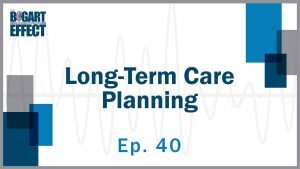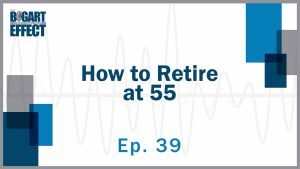ExxonMobilpension options for individuals who separate from service prior to reaching retirement eligibility are not as well understood as for those who have a normal retirement. The purpose of this communication is to help clarify the non-retiree options.
Understanding Eligibility and Vesting Rules
Reaching retirement eligibility typically means being at least age 55 with at least 15 years’ experience. There are some exceptions to the 55 and 15 rule, but that is outside the scope of what we want to cover here.
All employees are 100% vested in the pension benefit after 5 years of eligible service. If someone separates before 5 years of service, there is no benefit. If someone separates from service after being vested, but before being eligible to retire, they have three options:
- Receive the full vested benefit as a single-life annuity at age 65
- Receive a discounted benefit (a percentage of #1) at an age less than 65
- Receive a one-time lump sum offer.
This is very different from the array of options available to someone who is eligible for retirement. It is wasted effort to make a comparison. We will just focus on the meaning of these three options.
Understanding ExxonMobil’s Defined Benefit Plan
ExxonMobil has both a defined benefit plan (which we are discussing here) and a defined contribution plan (The Savings Plan, also called the 401(k) plan), which we are not discussing today.
A defined benefit plan promises a specified monthly benefit at retirement. The retirement benefits provided by a defined benefit plan are typically based on some kind of formula that considers factors like your time with the company, your salary and your age.
ExxonMobil offers an annual payout equal to 1.6% of your “average pay” for each year you are with the company. You do not have to retire from the company to get this benefit. As mentioned above, after 5 years, it’s a vested benefit.
There are not that many defined benefit plans around anymore. As of 2021, only 11% of U.S. employee participated in a defined benefit plan at all. That number has been declining for many decades.
That “average pay” mentioned above; ExxonMobil calls that “pensionable pay”. Pensionable pay is the average of the highest 36 consecutive months out of the last 10 years. This is usually the last 36 months, but it protects someone who was injured and worked restricted duty for a period prior to retirement. Pensionable pay is expressed in monthly income and that means the base pension benefit is expressed as a monthly benefit.
Social Security Integration and Benefit Calculations
As with most defined benefit plans, the ExxonMobil plan is “integrated” with Social Security. An integrated pension plan is an employer-based pension plan in which Social Security is counted as part of the employees’ total benefits. The logic of Social Security integration is that the employer paid into Social Security just as much as the employee; it was a 50/50 deal on taxes paid for Social Security every paycheck. So, the employer should be able to account for their part of that Social Security payout. In other words, in some cases, the employer can reduce the pension benefit by as much as 50% of the employee’s anticipated Social Security benefit.
As you might know, a retiree’s Social Security benefit is based on their highest 35 years of earnings. So, how do you do adjust for that? The ExxonMobil plan uses a common strategy. The Social Security “offset” is:
SS Offset = 1.5% x [years of service, but not more than 33.3333 years]
This formula ensures that the offset is never more than 50% of the anticipated Social Security benefit.
The “vested benefit” of an ExxonMobil employee is the “base pension benefit” minus the “SS offset”. The form of the benefit is a monthly annuity starting at age 65 and continuing for the life of the employee.
If a person takes the benefit before age 65, they usually receive less than 100% of the “vested benefit”. Below shows a part of the table of discounts, just to give a feeling for the significant difference between those who are retirement eligible (“retirees”) versus those who are not retirement eligible (“terminees”).
| Age | Retiree | Terminee |
| 65 | 100% | 100% |
| 60 | 100% | 60% |
| 55 | 75% | 38% |
Lump Sum Options and Decision Making
For most of the last 100 years, that was the end of the story.
Starting in the middle of 2020, ExxonMobil has made a “one-time offer” for a lump sum settlement of the pension benefit when someone separates from service prior to being retirement eligible. I am putting “one-time offer” in quotations because prior to 2020 we occasionally saw lump sums offered; and, since 2020 we have seen lump sum offers made to people at times other than immediately following separation from service. But do not be lulled into wishful thinking. If you pass on the one-time offer it might never come again.
Often, people want to know how the lump sum was calculated. We will address that question further below. But please understand, it doesn’t matter. More important is how do you make the decision about which option to take.
Our recommended approach on how to make the lump sum versus annuity decision in this case is: (1) compare the lump sum today with the undiscounted annuity at age 65; (2) use Internal Rate of Return (IRR) to determine how long you need to live to breakeven. To do this analysis we need to assume an investment rate of return. After that, the analysis is straightforward.
We have a webinar from April 2023 on the topic of how to calculate a lump sum from an annuity.
The webinar covers the case of someone who is retirement eligible. We mention it here because it gives a good starting point for understanding this topic.
In the case of a non-retiree, however, there are two different ways one could approach calculating the lump sum from the annuity. We have seen ExxonMobil use both approaches.
- Prior to 2020, we saw that first the annuity was discounted to the current age, and then the lump sum was calculated from today forward.
- Since 2020, we see that the undiscounted annuity is used; which sounds too good to be true; but, the assumption is that the annuity payments do not start until age 65. Therefore, there is the potential for many years of zero cash flow in your present value calculation.
Prior to 2020, I cannot recall a single case where we recommended taking the lump sum. The early benefit reductions are too high for a reasonable assumption of investment return to overcome. So, using method #1 to calculate the lump sum means that you are unlikely to want to take the lump sum.
In 2021 and early 2022, interest rates were so low that using method #2 to calculate the lump sum did not hurt too badly. Using method #2 combined with low discount rates resulted in us recommending lump sum most of the time.
Unfortunately, interest rates are a moving target. If you are facing this decision point, let us help. Bogart Wealth offers retirement planning services in Houston, Texas and in McLean, Virginia. We’ll learn about your long-term goals and help map out your finances, ensuring your retirement strategy aligns with your retirement ideas.
Contact Bogart Wealth for more information on our intelligent retirement planning services.
IMPORTANT DISCLOSURE INFORMATION
Please remember that past performance is no guarantee of future results. Different types of investments involve varying degrees of risk, and there can be no assurance that the future performance of any specific investment, investment strategy, or product (including the investments and/or investment strategies recommended or undertaken by Bogart Wealth, LLC [“Bogart Wealth”]), or any non-investment related content, made reference to directly or indirectly in this blog will be profitable, equal any corresponding indicated historical performance level(s), be suitable for your portfolio or individual situation, or prove successful. Due to various factors, including changing market conditions and/or applicable laws, the content may no longer be reflective of current opinions or positions. Bogart Wealth is not affiliated with ExxonMobil; the content of this commentary has not been written or endorsed by ExxonMobil. Moreover, you should not assume that any discussion or information contained in this blog serves as the receipt of, or as a substitute for, personalized investment advice from Bogart Wealth. To the extent that a reader has any questions regarding the applicability of any specific issue discussed above to his/her individual situation, he/she is encouraged to consult with the professional advisor of his/her choosing. Bogart Wealth is neither a law firm nor a certified public accounting firm and no portion of the blog content should be construed as legal or accounting advice. A copy of the Bogart Wealth’s current written disclosure Brochure discussing our advisory services and fees is available for review upon request or at www.bogartwealth.com. Please Note: Bogart Wealth does not make any representations or warranties as to the accuracy, timeliness, suitability, completeness, or relevance of any information prepared by any unaffiliated third party, whether linked to Bogart Wealth’s web site or blog or incorporated herein, and takes no responsibility for any such content. All such information is provided solely for convenience purposes only and all users thereof should be guided accordingly. Please Remember: If you are a Bogart Wealth client, please contact Bogart Wealth, in writing, if there are any changes in your personal/financial situation or investment objectives for the purpose of reviewing/evaluating/revising our previous recommendations and/or services, or if you would like to impose, add, or to modify any reasonable restrictions to our investment advisory services. Unless, and until, you notify us, in writing, to the contrary, we shall continue to provide services as we do currently. Please Also Remember to advise us if you have not been receiving account statements (at least quarterly) from the account custodian.



